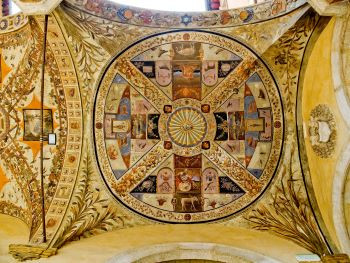




Not far from Piazza del Campo in Siena, along the prestigious Via di Città, you can find the Palazzo Piccolomini known also as Palazzo delle Papesse.
The Palazzo delle Papesse, one of the most imposing buildings in humanist Siena, is a symbol of the dynastic policy of Enea Silvio Piccolomini, Pope Pius II, who ascended the papal throne in 1458. As its name suggests, the residence was intended for his sister Caterina.
This palazzo was built between 1460 and 1495. In typical Florentine Renaissance style, the palazzo is on three floors, with the ground floor sheathed in studded stone and bifore windows opening up on the floors above. A terrace on the second floor offers a fine view of the so-called facciatone, the facade of the Duomo, while the whole of the city can be observed from the covered roof terrace on the summit of the palazzo.
In 1633, the Palace hosted the scientist Galileo Galilei who observed the moon from here, discovering that this satellite was not perfect or spherical as was believed, but dotted with mountains and craters on the surface.
In November 1998 the palazzo was opened to the public as a contemporary arts centre. In addition to the Renaissance Palace, with its courtyard and terrace, which ends with the spectacular panoramic view of Siena from the rooftop, you can admire the works on display.
The courtyard of the Palazzo delle Papesse, with its magnificent, frescoed loggia, where grotesques, fruit and flower garlands, candelabras, allegorical and mythological figures are cheerfully lined up, is a lively meeting place in the heart of Siena, an open-air oasis. It is the perfect place to enjoy a good coffee or take a lunch break.

Clickhere
to see on google maps
Address:
Via di Città, 126, 53100 Siena
Your ticket to visit the Palazzo delle Papesse in Siena is already included in your Florence City Pass.
Included in City Pass
Free access to this and many other attractions. Free travel on public transport, discounts included.

incl. VAT and service fees, free shipping via e-mail